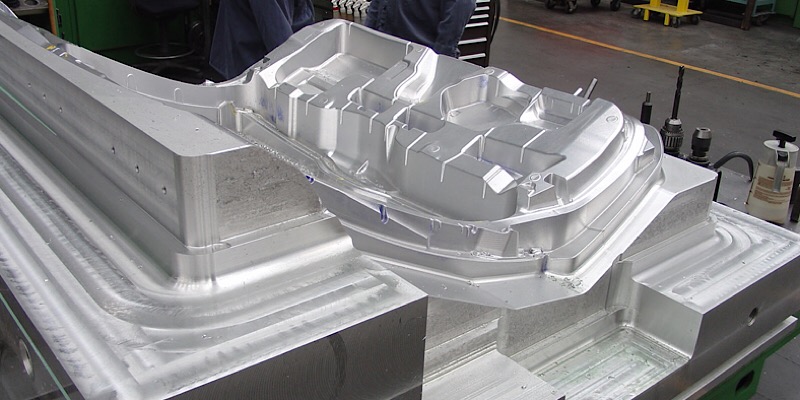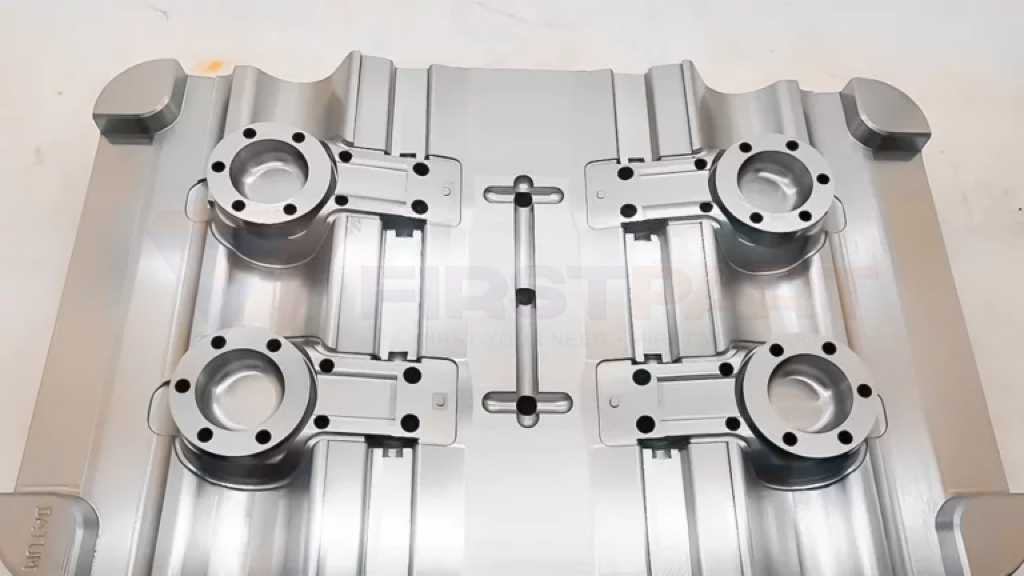Yes, injection molds are often made of aluminum, especially for rapid prototyping and short-run productions.

Advantages of Aluminum Injection Molds
When it comes to injection molding, the choice of mold material can play a crucial role in the overall success and efficiency of the process. Over the years, aluminum has risen as a popular choice among manufacturers for several compelling reasons. Let’s dive into some of the primary benefits of using aluminum for injection molds.
Faster Heat Dissipation
Aluminum, by nature, is an excellent conductor of heat. Its thermal conductivity is about 121-235 W/mK, which is significantly higher than many other commonly used mold materials. This means that aluminum molds can cool down more rapidly post injection, thus allowing the plastic inside to solidify faster. This enhanced cooling capability can translate to:
- A drop in production time by up to 30%.
- Enhanced product quality due to uniform cooling, reducing warpage in final parts.
- Lower chances of hot spots which can adversely affect the quality of the molded part.
Reduced Cycle Times
One of the main challenges in injection molding is the wait time associated with the cooling of the injected plastic. Thanks to aluminum’s thermal properties, molders can experience significantly reduced cycle times. For manufacturers, this translates to:
- An increase in production speed by up to 40%.
- Potential for higher profits due to increased production rates.
- Savings on energy costs because the machine operates for a shorter duration per cycle.
Lighter Weight and Easier Handling
Aluminum is notably lighter than its steel counterpart. A typical aluminum mold can weigh anywhere from 40% to 60% less than a similar steel mold. This weight difference offers several benefits:
- Easier and safer manual handling of molds, reducing potential workplace injuries.
- Lower wear and tear on molding machines, extending their lifespan.
- Reduced transportation costs due to the lighter weight.
Cost-Efficiency for Short-Run Productions
When it comes to short-run productions or prototyping, aluminum molds offer a distinct advantage in terms of cost:
- Initial mold production costs can be 20-30% lower than steel molds.
- Faster production cycles lead to a reduced cost per part.
- Given the average lifespan of an aluminum mold (around 100,000 to 200,000 cycles depending on the design and application), it provides excellent value for money for limited runs or prototyping.
Limitations of Aluminum Molds
While aluminum injection molds come with a host of advantages, there are also inherent challenges that manufacturers must be aware of. It’s essential to weigh these limitations against the benefits to make informed decisions. Here are some of the primary concerns associated with aluminum molds.
Wear and Tear Concerns
Aluminum is softer than steel, which makes it more susceptible to wear and tear, especially in high-volume production scenarios. Specific issues include:
- Erosion at the gate areas, especially if abrasive resins are frequently used.
- The potential for scratching or denting, especially in molds with intricate details or thin walls.
- Aluminum’s relative softness can lead to a higher frequency of maintenance and repair, which, over time, can increase operational costs.
- For high-volume production runs, steel or a harder material might be a better choice due to the longevity they offer. According to some studies, steel molds can last up to 500,000 to 1,000,000 cycles, a stark contrast to aluminum’s 100,000 to 200,000 cycle lifespan.
Limited Lifespan Compared to Steel Molds
Aluminum molds, as mentioned, don’t typically last as long as steel molds. Here are some key factors to note:
- While cost-effective for short runs, for products with expected high demand or long-term production, the lifespan of aluminum molds might fall short.
- Steel molds, with their increased durability and resistance to wear, are often a more economical choice for long-term, high-volume production.
- It’s crucial for manufacturers to calculate the break-even point between the initial cost savings of an aluminum mold and the potential replacement costs over time.
Challenges with Complex Designs
Complex and intricate designs might pose challenges when using aluminum as the mold material. Specific concerns are:
- Due to its softer nature, achieving high-resolution details might be more challenging compared to using harder materials.
- Complex molds with many moving parts or intricate channels might wear out faster or face issues like galling.
- The risk of warpage or distortion during machining is higher with aluminum, especially when dealing with complex geometries.
- For products that demand precision, like certain medical devices or micro-components, the challenges posed by aluminum molds might outweigh their benefits.
Comparing Aluminum Molds to Other Materials
In the vast landscape of injection molding, the choice of mold material is paramount. It can influence production rates, costs, and the quality of the final product. Among various mold materials, aluminum has carved out a niche for itself, but how does it fare when compared to other prominent materials?
Aluminum vs. Steel Molds
- Thermal Conductivity: Aluminum boasts a thermal conductivity in the range of 121-235 W/mK, making it excellent for quick heat dissipation. In contrast, steel generally falls in the 15-50 W/mK range. The superior thermal conductivity of aluminum translates to faster cooling times and, consequently, reduced cycle times.
- Weight: Aluminum is considerably lighter than steel, often weighing 40-60% less. This reduced weight eases manual handling and reduces wear on molding machines.
- Cost: Initial production costs for aluminum molds can be 20-30% lower than steel molds. However, given steel’s longer lifespan (500,000 to 1,000,000 cycles compared to aluminum’s 100,000 to 200,000), steel might prove more economical for prolonged high-volume productions.
- Durability: Steel, being harder than aluminum, is less susceptible to wear and tear. It can withstand high pressures and abrasive materials better than aluminum.
- Finish and Detailing: Steel molds can achieve a finer, high-gloss finish compared to aluminum. They can also capture intricate details more efficiently due to their hardness.
Aluminum vs. Beryllium-Copper Alloys
- Thermal Conductivity: Beryllium-copper alloys outshine both aluminum and steel with thermal conductivity ratings of 200-300 W/mK. This ensures even faster cooling rates than aluminum, which can be particularly valuable in specific molding scenarios.
- Strength: Beryllium-copper alloys strike a balance between the softness of aluminum and the rigidity of steel. This makes them durable yet more pliable than steel.
- Cost: These alloys tend to be more expensive, both in terms of raw material costs and machining. The high cost often relegates their use to specific applications, like areas of molds that require rapid heat removal.
- Lifespan: Beryllium-copper alloys have a lifespan that falls somewhere between aluminum and steel, making them suitable for mid to high-volume productions.
Factors to Consider when Choosing Mold Material
- Production Volume: For short runs or prototypes, the cost-effectiveness and rapid production capabilities of aluminum can be enticing. For high-volume, long-term production, the durability and longevity of steel might be more appropriate.
- Budget: While aluminum molds might offer initial cost savings, one should factor in potential replacement or maintenance costs. Conversely, the higher upfront costs of steel or beryllium-copper might be offset by their longer lifespans.
- Material Being Molded: Certain abrasive plastics can cause accelerated wear on softer molds like aluminum. In such cases, steel or beryllium-copper alloys might be more suitable.
- Mold Complexity: If a mold demands intricate details, the hardness of steel can capture those nuances better than aluminum. However, complex molds that require efficient cooling might benefit from the thermal properties of beryllium-copper alloys.
Applications of Aluminum in Modern Injection Molding
In the evolving landscape of injection molding, aluminum has emerged as a favorite for many applications due to its unique set of properties. These properties, ranging from thermal efficiency to reduced weight, enable aluminum to fit seamlessly into contemporary molding needs. Let’s delve into the specific applications of aluminum in modern injection molding.
Prototyping and Short-Run Productions
- Rapid Turnaround: Aluminum’s excellent thermal conductivity, which ranges between 121-235 W/mK, allows for faster cooling times. This leads to quicker production cycles, making it ideal for prototypes that need rapid turnaround times.
- Cost Savings: The initial costs associated with aluminum molds are often 20-30% lower than those of their steel counterparts. This makes aluminum a financially sound choice for short production runs or prototyping where the mold’s lifespan isn’t a primary concern.
- Design Flexibility: The malleability of aluminum permits easy modifications, a boon for prototypes where iterative changes are commonplace.
- Quality Control: Given the uniform cooling offered by aluminum, prototypes often showcase reduced warpage and other defects. This ensures that the prototypes are of high quality, a critical factor in early product evaluations.
Specific Industries Benefiting from Aluminum Molds
- Automotive: Weight reduction is a driving force in the automotive industry. Lightweight aluminum parts, when coupled with the rapid production cycles offered by aluminum molds, are instrumental in this sector. Components like





